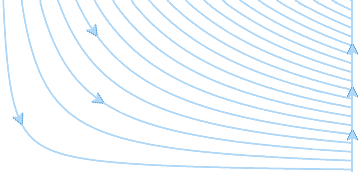National Water-Quality Program
Printable Page



Note: This webtool is designed to guide users through the process of evaluating how groundwater age distributions and changing contaminant inputs affect contaminant trends in wells and other groundwater discharges (Böhlke and others, 2014). As the aquifer model and calculations are idealized and highly simplified, the webtool is intended for educational use and should not be used for predictive purposes. GAMACTT is intended to be used online; if preferred, a downloadable version can be found at the following link:
GAMACTT Downloadable Standalone Version (requires Chrome browser)
GAMACTT (v1.0) - GAMACTT Guide
Groundwater Age Mixture in Well1,2
- Units (m):
- Aquifer Properties
- (m):
- :
- (m/yr):
- 3 (m):
- Well Configuration
- (m):
- (m):
- 3 (m):
- Mean Age of Water in Aquifer (yrs):
- Mean Age of Water in Well (yrs):
- Youngest Age of Water in Well (yrs):
- Oldest Age of Water in Well (yrs):
- Age Span of Water in Well (yrs):
- PEM Ratios for use in TracerLPM1:
- Upper Ratio (m):
- Lower Ratio (m):
Contaminant Simulation2,4
- Contaminant Input5
- :
- :
- :
- :
- Contaminant Degradation6
- (1/yr):
Aquifer Cross Section

Depth Below Water Table (m)
Distance from Discharge Area (m)
Age Profile
Age (years)
Depth Below Water Table (m)
Groundwater Age Distribution in Well (Incremental)
Age (years)
Fraction of Sample (% per year)
Groundwater Age Distribution in Well (Cumulative)
Age (years)
Cummulative Fraction of Sample (%)
Contaminant Trends
Year
Concentration Relative to Maximum Input (%)
Contaminant Concentration in


Depth Below Water Table (m)
Recharge Year
Concentration Relative to Maximum Input (%)
GAMACTT (Version 1.0): Groundwater Age Mixtures and Contaminant Trends Tool.
Note: This webtool is designed to guide users through the process of evaluating how groundwater age distributions and changing contaminant inputs affect contaminant trends in wells and other groundwater discharges (Böhlke and others, 2014). As the aquifer model and calculations are idealized and highly simplified, the webtool is intended for educational use and should not be used for predictive purposes. GAMACTT is intended to be used online; if preferred, a downloadable version can be found at the following link:
GAMACTT Downloadable Standalone Version (requires Chrome browser)
1
The partial exponential model (PEM) is used for all age distribution calculations.
Jurgens, B.C., Böhlke, J.K., and Eberts, S.M., 2012, TracerLPM (Version 1):
An Excel® workbook for interpreting groundwater age distributions from environmental tracer data: U.S. Geological Survey Techniques and Methods Report 4-F3, 60p.
An Excel® workbook for interpreting groundwater age distributions from environmental tracer data: U.S. Geological Survey Techniques and Methods Report 4-F3, 60p.
2 Users may interact with the webtool input data boxes and the open circles on the graphs.
3 Horizontal dimensions do not affect calculations.
4 Simulates nonpoint-source contaminant input across the entire contributing area of well.
5 Contaminant years may be between 1850 and 2100. Each year must be equal to or greater than the previous value.
6 Degradation is modelled as first-order decay. The decay constant (1/yr) is equal to ln(2) divided by the half life in years.
Use this USGS Groundwater Age Mixtures and Contaminant Trends Tool to explore the effects of basic aquifer properties and well configurations on groundwater age mixtures in groundwater discharge and on contaminant trends from varying nonpoint-source contaminant input scenarios.
Guide Resources
Description of webtool and example applications.
NOTE: This tool has been optimized for use in Chrome. Other browsers may not display the web page properly.
Document Accessibility: Part or all of these reports are presented in Portable Document Format (PDF); the latest version of Adobe Reader or similar software is required to view. Download the latest version of Adobe Reader, free of charge
